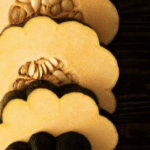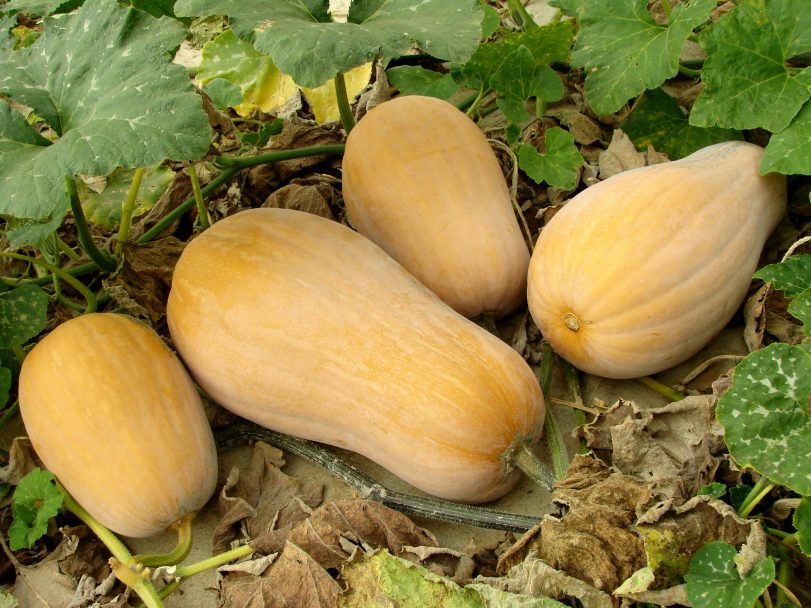 As temperatures cool, farmers’ markets and roadside stands replace their tomatoes and lettuce with a crazy-quilt display of winter squash. The gourds are a cheerful accent to autumn’s falling leaves and gloomy skies. The squash and gourds are orange and blue and grey and yellow; they’re striped and speckled; round and oblong, squat and tall. Some of them are ornamental, but most are great additions to your cool-weather kitchen.
As temperatures cool, farmers’ markets and roadside stands replace their tomatoes and lettuce with a crazy-quilt display of winter squash. The gourds are a cheerful accent to autumn’s falling leaves and gloomy skies. The squash and gourds are orange and blue and grey and yellow; they’re striped and speckled; round and oblong, squat and tall. Some of them are ornamental, but most are great additions to your cool-weather kitchen.
At Baywater Farms, a 6th generation family farm in Salisbury, winter squash is their primary autumn crop, according to Tim Fields, director of sales and marketing. “We grow the most popular squash: acorn, and butternut, delicata, and some Japanese kabocha.”
In addition to selling produce at farmers’ markets in Salisbury and Berlin, Md.; Lewes, De.; and Washington, D.C., Baywater Farms works closely with chefs in the region. “The chefs keep up with the trends in cooking, so we plant to reflect those needs.” Those are the varieties that most consumers want in their kitchens, too.
Winter squash are a nutritional jackpot. They have almost as many health benefits as they have shapes. They’re a good source of complex carbohydrates, protein, and fiber, and they contain a large variety of vitamins and nutrients, all of which make them a good choice for the winter months when other fresh local vegetables are not as easily available.
They are just as versatile in the kitchen. The mild flavor is generally on the sweet side, but with a lot of heartiness. “You can just sprinkle them with a little salt and pepper, or drizzle them with brown sugar and honey, like a dessert,” says Jessica Molnar, who works at Baywater Farm’s stall at the Salisbury Farmers’ Market.
Most squash can be baked or roasted, diced and used in casseroles and curries, pureed for a side dish or simmered in a soup. If you love Italian food, but want to avoid pasta, shred the meat of the spaghetti squash with a fork and enjoy a vegetable version of linguini.
The biggest challenge with cooking winter squash is its thick skin. The same qualities that help it survive harsher temperatures, a short growing season, and long winter storage make it a challenge to slice through and reach the meat inside. Master how to cut up a butternut squash and all the fall pumpkins and gourds will be fair game in your kitchen.
Another great quality of winter squash is that it is easy to store and preserve. To store, place the squash on several layers of newspaper in a cool, dry, well-ventilated area. They will keep for 3-6 months. Cooked squash can be frozen for several months. Tightly wrapped, freshly cooked squash can be refrigerated for up to 5 days.
While the squash are used over the winter, their growing cycle starts when people are still going to the beach. “Fall squash is planted in late summer, so they go through a lot of changes during their growing season, some of which is difficult. They have to handle the heat of the summer, and this year, the rain. And then the cooler temperatures. We plant three times each season to meet the demand, and each planting has its own challenges.”
Much of the work must be done by hand to avoid damaging plants and produce with large machinery. Another challenge is the growing populations of deer across the state that see a field of produce or grain a feast theirs for the taking. Kayla Griffith, an Anne Arundel County farmer, reports that deer make a huge impact to their bottom line as they come from the woodlands to dine on their produce and grain. “I know other farmers in the region who have lost tens of thousands of dollars of fresh produce,” Kayla says. “We lose just as much in corn and soybeans.”
Hungry for more? Sign up for our newsletter and find us on Facebook, Twitter and Instagram.

